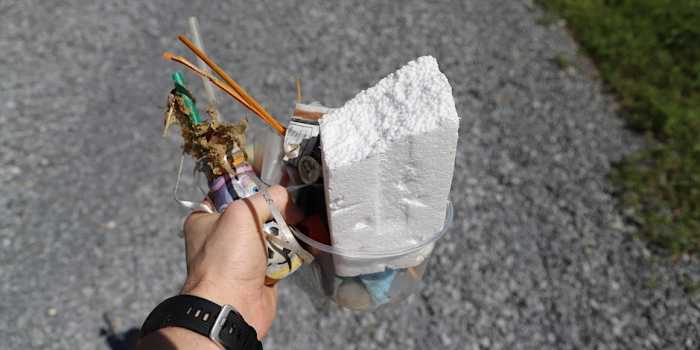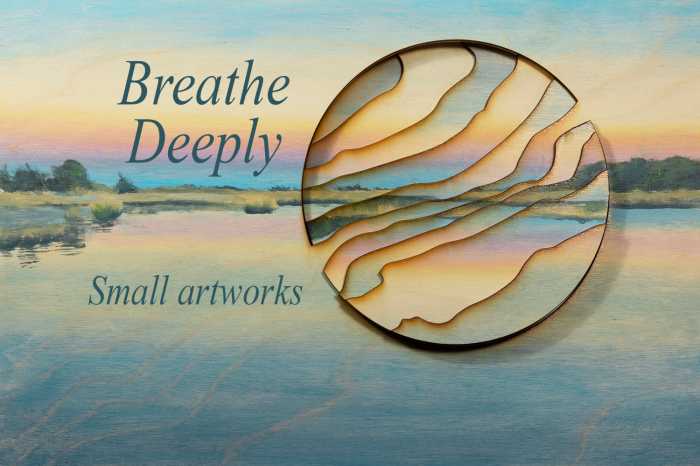By Karen Rubin, Travel Features Syndicate, goingplacesfarandnear.com
Today – technically the third day of our four-day Discovery Bicycle Tours Cambodia pre-tour in Siem Reap – is our first real bike ride, planned for 36 miles. We pick up our bikes at the tourist office where we also pick up our passes for the national historic sites, and cycle right into the Angkor Archeological Park. We cycle on the Angkor Bikeway and hidden trails through the ruins and forest of Angkor. (Calista Phillips, our Discovery Bicycle Tours guide, and I have already acquired our passes on the first evening when we went to see the sunset at Phnom Bakheng; the three-day pass allows for three, nonconsecutive days of visits. Discovery purchases our tickets and reimburses me the $62 I spent.)


We bike on country lanes with rice paddies and fields on either side, seeing homes with thatch roofs, water buffalo. Our guide, Ta, shows us a cashew nut as it is plucked from the tree, the outer layer opened releasing a noxious acid; and the abandoned skin of a snake.


What feels like 10 of the miles (though probably less), is riding through a thick layer of sand (like skiing on ice). Once I get the hang of it (the trick is getting into a lower gear), it is still stressful, requiring concentration, but not as scary, with immense and lasting satisfaction when we come to the end of this country road, where we come to a literal archway. Here we find a USAID hat in the middle of that sandy road – crumpled, ripped, dirty, trampled – a metaphor it seemed for what Trump/Musk had just done by shutting down USAID.

We ride a bit further on regular streets and have our first snack stop – with local foods (best cashews ever), dragon fruit, bananas, and coconuts cut so we can drink the juice with a straw, and then come upon a wedding, where the uncle of the groom comes rushing out to greet one of our riders, Pam, who he had helped rescue just two days before when their taxi had car trouble on the way from the airport. Small world!




We come to our first temple, Banteay Srei, a 10th century temple dedicated to the Hindu gods Shiva and Parvati, which is considered a “jewel of Khmer art” because of its intricate carvings.
The full ride is 36 miles but we have to cut it short by 6 miles for time, so are transported to the last two temples by bus (others could cut short the ride even earlier because the bus and bike truck pretty much follow us).
Our next stop is Ta Som with its dramatic ficus (fig) tree enveloping one of the towers. It was constructed at the end of 12th century, beginning of 13th century during the reign of King Jayavarman VII and features monumental gateways and a central shrine decorated with intricate carvings that I find dazzling. It was destroyed centuries ago and lay in ruins until international partners provided assistance to restore it. The temple earned a place on the World Heritage list in 1992 and was the first project to be managed by the World Monuments Fund’s Cambodian staff.



We next come to the stunning and significant Preah Khan which I find most intriguing and spell-binding – perhaps because one of the guides offers to give a private tour for $5 and points out views and details we never would have seen or appreciated, like the only carved image of Shiva holding a mirror among these temples, and an alcove where he tells us to beat our chest to hear the resonance. (This winds up being a common practice and I recommend it highly.)
Preah Khan (it means “Royal Sword”) was built in the 12th century for King Jayavarman VII to honor his father on the site of his victory over the invading Chams in 1191.
The guard explains that the King built this temple with an aim of bringing Hindus and Buddhists together – a Buddhist sanctuary is offset by satellite Hindu temples. Half of the temple has Hindu carvings; the other half is Buddhist. (I wonder if this is why the temple was intentionally destroyed.)

What is so fascinating about these vast temple complexes is that they were not just for worship but would have been like palaces, castles or fortresses, housing hundreds, if not thousands of people. The Preah Khan complex combined the roles of city, temple and Buddhist university and would have had 97,840 attendants and servants, including 1000 dancers and 1000 teachers.
The stone – which mostly appears grey-black- becomes a blazing orange in the setting sun as we leave.
We cross a bridge lined with impressive military figures – several with the heads cut off, very possibly to sell on the black market.


As we cross, the sun, glowing a fiery red, offers a spectacular scene and our guide, Hang, stops the bus for us. We have just two minutes to capture the setting sun before it falls behind trees.
Between 800 and 1200 A.D., hundreds if not thousands of temples were built through the region. The oldest ones have all but disappeared due to weather, war, religious conflict and greed (stealing the art for sale). The ones we see today have had to be excavated from overgrowth and restored and represent the Golden Age of monument building. They have a certain common style – largely because of they were built in the same era, and many of the ones we see were built by King Jayavarman VII, which makes you wonder about how he had the resources and manpower. But the temples are remarkably individual for their art, theme and most especially how you experience of discovering them, so I come away with my favorites.
The most famous – for good reason – is Angkor Wat, a religious complex spanning more than 400 acres (five times the size of the Vatican) and widely recognized (confirmed by the Guinness World Records) as the largest religious structure or monument in the world. It was originally built by the Khmer Empire, commissioned by King Suryavarman II in the early 12th century as a Hindu temple before being converted into a Buddhist site by the end of the century.
What strikes me, though, after seeing several of these, particularly those built by King Jayavarman VII and King Suryavarman II, is how similar to Peru and the temples built in the mid-1400s, most famously Machu Picchu, by the Incan emperor Pachacuti, known as the “Alexander the Great” of the Inca. It makes you think about the commonality of the human history.
Back at the Aviary Hotel, I get in a 20-minute swim in the rooftop pool before meeting our group for a 10-minute walk to Chamrey Tree, an elegant restaurant filled with gorgeous art, where we have a fantastic dinner.
After dinner, Calista and Jake go off to explore the night market, where Jake is game to try any unusual food. The next morning, he reports back of his experience eating insects (not sure if he also snacked on snake or just observed).
Departure Day: Angkor Sunrise & Biking
Day 4 is our departure day from Cambodia, but our last morning in Siem Reap starts at 4:30 am (we are given a bagged breakfast to take with us) so we can be at Angkor Wat for the sunrise (with thousands of others). The famous view would have the iconic temple back-lit and reflected in two large pools in front – alas the sunrise is not all that impressive and even coming so early, it is hard to get a good enough position for “the money shot,” but the experience is exciting enough.
The real thrill comes after, when we go to explore the temple. Most of the sunrise-goers leave, so we are able to visit with comparatively few people if we hustle – our guide urges us to get on line fast so we aren’t trapped in an hour-long wait to climb the steep staircase.
We get inside the temple just as the sun is penetrating the structure.
It took hundreds of thousands of workers just 37 years to build – (the 37 year deadline coincides with the belief in 37 heavens and 32 hells and there are 37 steps to enter. Like Machu Picchu, these temples were built by devotees as well as slaves. The stones came from a quarry 35 miles away (during COVID, they had time to study and discovered a canal, which they now believe was used to float the stones).

The temple would have been overgrown after centuries of abandonment; it was rediscovered in 1941 and the French helped restore the temple after a collapse in 1947. The World Monuments Fund has been working to preserve and restore these temples since 1991 and Angkor Wat was designated a UNESCO World Heritage Site in 1992.

Built in early 12th C under the reign of Suryavarman II, Angkor Wat was both the grandest of all Khmer temples and a city in its own right.
Angkor Wat houses what are considered the finest examples of Khmer art – carved bas-reliefs stretching nearly 600 meters.


In the eyes of Khmer people, the most significant bas-relief in the Churning of the Sea of Milk Gallery portrays devas and asuras in a dramatic tug of war representing the eternal struggle of good and evil that churns amrit, the elixir of everlasting life, from the primordial ocean.



Heaven and Hell is depicted in an astonishing 68-meter-long wall carving: heaven above consists of two tiers while hell has 32 tiers. The inscriptions tell what kind of sin a person may have committed in life judging by the tier the sinner ended up on after death.
In the Hall of a Thousand Buddhas (Preah Poan) a few stand out dramatically from the grey statues for their gold robes. Sometime in the late/post-Angkor eras after the temple converted to Buddhism and eventually Theravada Buddhism, monks began collecting Buddha statues here.
Banyon Temple
From Angkor Wat, we bike to the Bayon Temple, with its enormous, fantastical enigmatic faces looking in every direction from every stone tower – 216 in all. It is not known who the face represents – we heard they represented Buddha before achieving Nirvana, or possibly the ruler who built the temple, Jayavarman VII.
Dating from the late 12th century (after Angkor Wat) and the last to be built in the Angkor, the Bayon is a Mahayana Buddhist temple built to pay homage to the king responsible for its construction, Jayavarman VII, and dedicated to his mother. We are told that 12,640 people would have lived within it, including 650 dancing girls.
We note the sign: “Beware of Monkey Attack” – sure enough, one of our group reports being “accosted” by a monkey.
With time growing short before some of our group has to get to the airport, our 12-mile bike ride is cut short (though some have biked along the top of the defensive walls of Angkor Thom). and we travel by bus to the last temple we get to visit Ta Prohm, famous for scenes from Angelina Jolie’s “Lara Croft: Tomb Raider” film.
You really feel the age of the Ta Prohm temple with massive trees growing out of the stone and massive stone blocks in heaps.
Of the statues consecrated here in 1186 by Jayavarman VII here, most important was Prajnaparamita, the personification of the Perfection of Wisdom, a figure whom the king identified with his mother.
Given its fame and the dramatic setting, as well as the time of day, it is no surprise that the temple is fairly overrun with tourists.
It’s fairly amazing how much we do on Day 4, our departure day when we fly to Hanoi to start the 12-day Vietnam Discovery Bicycle tour: three temples, a fabulous bike ride, lovely lunch, and since they have arranged a late check out (the flight several of us are on is at 7 pm), I even have time for a swim at the Aviary Hotel. But then I remind myself: we got up at 4:30 am!

Discovery Bicycle Tours organizes everything to make our biking as satisfying and our brief time here as productive and pleasant as possible – which means we are accompanied by a third guide/bike mechanic; the bike truck typically is nearby; and the bus that takes us to the start/finish, and various stops accompanies like a SAG vehicle, so we don’t have to bike with our big cameras but have access when we get to a site. The snack (and rest) stops are also really marvelous – typically with local foods – well planned and well timed.

In addition to the Discovery Bicycle Tours guide, we have two local guides here in Cambodia – one who likes to be called “Hang,” and the other who likes to be called “Ta” – both take care of us like mother hens, though I would have liked more background information about the different sites we visit. (An excellent source is “Angkor Temples in Cambodia” www.angkor-temples-in-cambodia.com.)

Discovery does a great job of providing advance materials, the day-by-day itinerary, packing lists; excellent bikes (e-bikes are available but not really necessary) and helmets, and even though we do ride together with guides at the front and back (and not a great idea to go off on our own), we have Ride GPS so we can follow the route.
Get the required visa and arrival document at Cambodia’s website (evisa.gov.kh), where the fee is $30 (if you use a visa service it costs something like $197), but give yourself enough time to get the confirmation.
Also, always double-check the U.S. State Department’s travel advisory and make sure no vaccinations are required or recommended.
It is also recommended to purchase travel insurance – especially for the medical and evacuation coverage. You can check a site like travelinsurance.com to get recommendations.
On to Vietnam!
Discovery Bicycle Tours, 2520 W. Woodstock Rd., Woodstock, VT 05091, 800-257-2226, 802-457-3553, info@discoverybicycletours.com, discoverybicycletours.com.
__________________
© 2025 Travel Features Syndicate, a division of Workstyles, Inc. All rights reserved. Visit goingplacesfarandnear.com and travelwritersmagazine.com/TravelFeaturesSyndicate/. Blogging at goingplacesnearandfar.wordpress.com and moralcompasstravel.info. Visit instagram.com/going_places_far_and_near and instagram.com/bigbackpacktraveler/ Send comments or questions to FamTravLtr@aol.com. Bluesky: @newsphotosfeatures.bsky.social X: @TravelFeatures Threads: @news_and_photo_features ‘Like’ us at facebook.com/NewsPhotoFeatures

































































